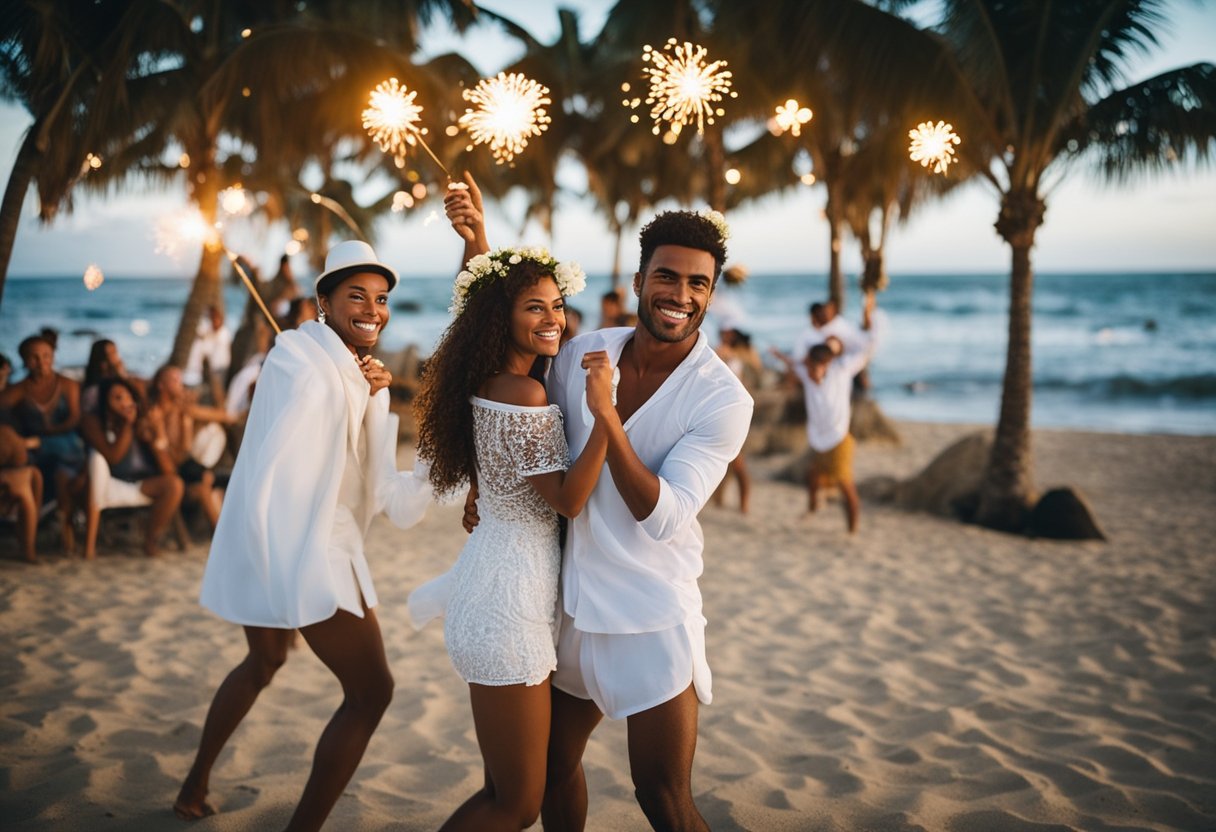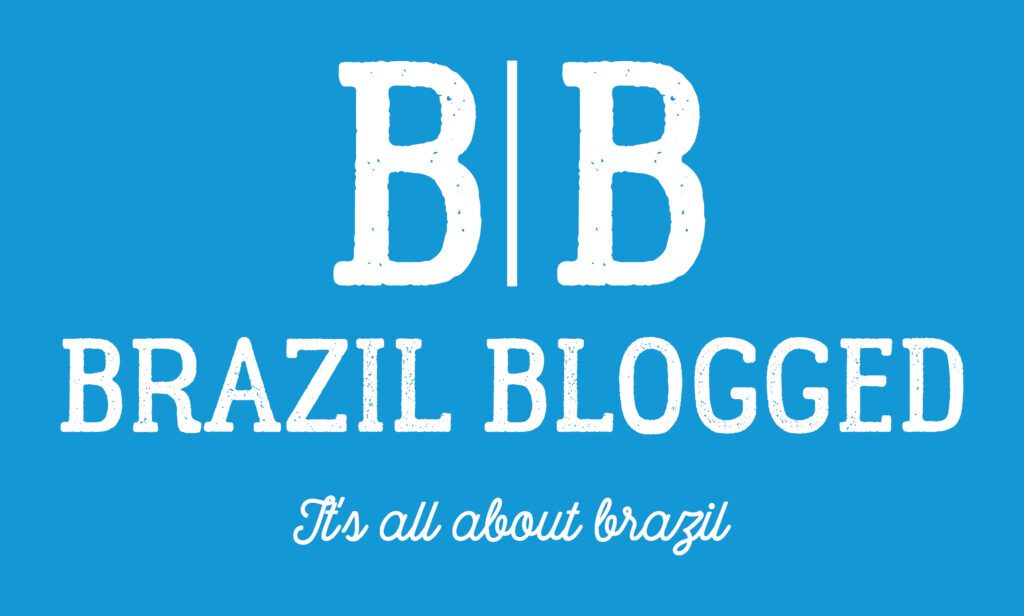Brazilian Christmas and New Year’s Eve Traditions: A Guide
Brazil is a country that is known for its vibrant culture and colorful traditions. The Christmas and New Year’s Eve celebrations in Brazil are no exception. Brazilians celebrate these holidays with great enthusiasm and joy, and their traditions are a unique blend of religious, spiritual, and social customs.

The Christmas celebrations in Brazil start in early December and continue until Epiphany on January 6th. During this time, Brazilians decorate their homes with Christmas lights, ornaments, and nativity scenes. They also attend church services, sing Christmas carols, and exchange gifts with family and friends. One of the most popular Christmas traditions in Brazil is the “Amigo Secreto” or “Secret Friend” game, where people draw names and anonymously give gifts to each other. Traditional Christmas foods in Brazil include “panettone,” a sweet bread with dried fruits, and “rabanada,” a type of French toast made with condensed milk and cinnamon.
Key Takeaways
- Brazilians celebrate Christmas and New Year’s Eve with a unique blend of religious, spiritual, and social customs.
- Christmas celebrations in Brazil start in early December and continue until Epiphany on January 6th.
- Traditional Christmas foods in Brazil include “panettone” and “rabanada.”
Historical Context of Holiday Celebrations in Brazil

The holiday season in Brazil is a time of joy and celebration, marked by a rich blend of Catholic, African, and Indigenous traditions. Understanding the historical context of these holiday celebrations can help to shed light on the unique customs and practices that define Brazilian culture.
Influence of Catholic Traditions
The influence of Catholicism on holiday celebrations in Brazil is undeniable. Christmas, for example, is a major religious holiday in Brazil, marked by a number of traditions and customs that have been passed down through the generations. Nativity scenes, for instance, are a common sight in Brazilian homes and churches during the holiday season. These scenes typically depict the birth of Jesus, complete with a manger, Mary, Joseph, and the three wise men.
The Franciscan friars who arrived in Brazil in the 16th century played a significant role in shaping the country’s Catholic traditions. They introduced the idea of the Nativity scene, and also helped to establish the custom of holding midnight Mass on Christmas Eve.
African and Indigenous Contributions
While Catholicism has had a major influence on holiday celebrations in Brazil, it is not the only cultural force at play. The country’s African and Indigenous populations have also made important contributions to the holiday traditions that are celebrated today.
For example, the Afro-Brazilian religion of Umbanda has had a significant impact on the way that New Year’s Eve is celebrated in Brazil. Many Brazilians believe that the start of the New Year is a time when the veil between the living and the dead is thin, and so they celebrate by dressing in white and making offerings to the sea goddess Yemanjá.
Indigenous traditions are also an important part of holiday celebrations in Brazil. For example, the Guarani people of southern Brazil celebrate the summer solstice with a festival known as the Nheengatu. This festival involves singing, dancing, and the exchange of gifts, and is an important way for the Guarani to celebrate their connection to nature.
Overall, the holiday traditions of Brazil are a rich and complex blend of Catholic, African, and Indigenous influences. By understanding the historical context of these traditions, we can gain a deeper appreciation for the unique customs and practices that define Brazilian culture.
Christmas in Brazil

Christmas in Brazil is a time for family, traditions, and festive foods. While Brazil is known for its warm weather, Christmas is still celebrated with many of the same traditions as in colder climates. Brazilians typically celebrate Christmas on the night of December 24th, and the holiday is often combined with New Year’s Eve festivities.
Traditional Decorations and Nativity
Just like in many other countries, Brazilians decorate their homes with Christmas trees, lights, and ornaments. However, one of the most important decorations in Brazil is the “presépio,” or nativity scene. These scenes are often very elaborate, featuring not just the traditional figures of Mary, Joseph, and baby Jesus, but also animals, shepherds, and wise men.
Festive Foods and Desserts
Christmas in Brazil is a time for feasting, with many families gathering together to enjoy traditional foods and desserts. One of the most popular desserts is “rabanada,” which is similar to French toast and is often served with cinnamon and sugar. Another popular dessert is “panettone,” a sweet bread filled with raisins and candied fruit.
Family Gatherings and Midnight Mass
Christmas in Brazil is a time for family, and many people travel long distances to be with their loved ones. On Christmas Eve, families often attend Midnight Mass together, which is called “Missa do Galo” in Portuguese. After Mass, it is common for families to return home for a late-night feast.
Overall, Christmas in Brazil is a time for traditions, family, and delicious food. While the holiday may look a little different than in other parts of the world, the spirit of Christmas is alive and well in Brazil.
New Year’s Eve Celebrations

New Year’s Eve, or Réveillon as it is called in Brazil, is one of the most important celebrations of the year. Brazilians believe that the way they spend New Year’s Eve sets the tone for the rest of the year. As such, they have developed a variety of traditions and rituals to ensure that they start the new year off on the right foot.
Copacabana Beach Festivities
One of the most famous New Year’s Eve celebrations in Brazil takes place on Copacabana Beach in Rio de Janeiro. The beach is transformed into a massive party, with live music, dancing, and fireworks. It is estimated that around two million people come to Copacabana Beach to celebrate New Year’s Eve, making it one of the largest New Year’s Eve parties in the world.
Rituals for Good Fortune
Brazilians believe that certain rituals performed on New Year’s Eve can bring good fortune in the coming year. One of the most popular rituals is to wear white clothing. White is believed to represent peace and purity, and wearing it on New Year’s Eve is said to bring peace and harmony in the coming year. Another popular ritual is to make offerings to Iemanjá, the water goddess. Brazilians believe that Iemanjá can bring blessings of abundance and prosperity in the new year.
New Year’s Eve Party Atmosphere
The party atmosphere on New Year’s Eve in Brazil is electric. People gather with family and friends to celebrate, feast, and dance. Many people also wear multi-colored underwear on New Year’s Eve, with each color representing a different wish for the new year. For example, yellow underwear is said to bring wealth and prosperity, while red underwear is said to bring love and passion.
In conclusion, New Year’s Eve is a time of great celebration in Brazil, with a variety of traditions and rituals designed to bring good fortune and blessings in the coming year. From the massive party on Copacabana Beach to the rituals for good fortune, Brazilians take their New Year’s Eve celebrations seriously and with great joy.
Traditional Holiday Foods and Recipes
Main Dishes and Sides
In Brazil, Christmas and New Year’s Eve are celebrated with delicious and diverse foods. One of the most popular main dishes is turkey, which is usually stuffed with a mixture of fruits, raisins, and bacon. Chicken is another popular meat that is often served with rice and lentils. Brazilians also enjoy a variety of side dishes, such as salads with olives and eggs.
One traditional Brazilian side dish is farofa, which is made from toasted manioc flour and can be mixed with various ingredients such as bacon, dried fruit, or even banana. Another popular side dish is rice, which is often mixed with vegetables, such as peas and carrots.
Sweet Treats and Desserts
Brazilian sweet treats and desserts are an essential part of Christmas and New Year’s Eve celebrations. One of the most popular desserts is panettone, which is an Italian sweet bread filled with fruits such as raisins and candied fruit. Another popular dessert is rabanada, which is similar to French toast but coated in sugar and cinnamon.
Fruits play an important role in Brazilian desserts, and pomegranate is often used as a symbol of good luck. Baked goods such as cakes and pies are also popular, with many families having their own special recipes.
In conclusion, Brazilians celebrate Christmas and New Year’s Eve with a variety of delicious and diverse foods. From traditional main dishes such as turkey and chicken to sweet treats and desserts, there is something for everyone to enjoy.
Gift-Giving and Social Customs
Secret Santa and Family Traditions
Gift-giving is an essential part of Brazilian culture, and Christmas and New Year’s Eve are no exceptions. Brazilians love to exchange gifts, and they do it in a variety of ways. One popular tradition is the “Amigo Oculto” or “Secret Friend.” In this tradition, members of a group draw names and then secretly give gifts to the person whose name they drew. On Christmas Eve or New Year’s Eve, the group gathers together to reveal who their “Secret Friend” was and exchange gifts. This tradition is especially popular among families and friends.
In Brazilian families, Christmas is a time for togetherness and celebration. Families often gather for a big feast on Christmas Eve, exchanging gifts and enjoying each other’s company. It is common for children to receive gifts from Santa Claus, who is known as “Papai Noel” in Brazil. In some families, it is also traditional to exchange gifts on Epiphany, which is celebrated on January 6th.
Gift Exchange Among Friends
In addition to exchanging gifts with family members, Brazilians also enjoy exchanging gifts with their friends. In many social circles, it is customary to exchange gifts during the holiday season. Friends often exchange small gifts as a token of their friendship, and it is common to give gifts such as chocolates, flowers, or small trinkets.
Overall, gift-giving is an important part of Brazilian culture and plays a significant role in the holiday season. Whether it’s exchanging gifts with family members or participating in a “Secret Friend” gift exchange with friends, Brazilians love to show their appreciation and affection through the giving of gifts.
Religious and Spiritual Practices
Midnight Mass and Prayers
In Brazil, Christmas is celebrated with a strong religious influence. The majority of Brazilians are Catholic, and the celebration of Christmas is an important part of their faith. On Christmas Eve, many Brazilians attend midnight Mass, known as “Missa do Galo,” which translates to “Rooster’s Mass.” This tradition is believed to have originated in Portugal and was brought to Brazil by the Portuguese.
During the Mass, prayers are said, and hymns are sung. The nativity scene is also an essential part of Christmas celebrations in Brazil. The nativity scene is called “Presépio” in Portuguese and is usually displayed in churches and homes. It depicts the birth of Jesus Christ, and many Brazilians visit churches to see the nativity scene.
Offerings to Iemanjá and Umbanda Beliefs
In addition to Catholicism, many Brazilians also practice Afro-Brazilian religions such as Umbanda. Umbanda is a syncretic religion that combines elements of African religions, Catholicism, and Spiritism. One of the most significant beliefs in Umbanda is the worship of Iemanjá, the goddess of the sea.
On New Year’s Eve, many Brazilians, especially those who practice Umbanda, make offerings to Iemanjá. These offerings usually consist of flowers, candles, and other items that are placed in the sea as a way of asking for blessings and protection in the new year.
Overall, religious and spiritual practices are an essential part of Christmas and New Year’s Eve celebrations in Brazil. Whether it is attending midnight Mass or making offerings to Iemanjá, Brazilians take their faith and beliefs seriously and incorporate them into their holiday traditions.
New Year’s Superstitions and Beliefs
Brazilians have a rich tradition of superstitions and beliefs associated with New Year’s Eve, which they believe will bring them good luck, prosperity, and happiness in the coming year. In this section, we will explore some of the most colorful and fascinating New Year’s traditions and rituals practiced in Brazil.
Colorful Traditions and Their Meanings
One of the most popular New Year’s traditions in Brazil is wearing colored underwear. Brazilians believe that wearing specific colors on New Year’s Eve will bring them good luck and prosperity in the coming year. For example, wearing white underwear is believed to bring peace and harmony, while wearing red is believed to bring passion and love. Similarly, wearing yellow is believed to bring wealth and prosperity, while green is believed to bring good health.
Another colorful tradition is the use of fireworks. Brazilians believe that setting off fireworks at midnight on New Year’s Eve will scare away evil spirits and bring good luck and prosperity in the coming year. Fireworks displays are a common sight in cities and towns across Brazil on New Year’s Eve.
Prosperity Rituals and Foods
In addition to wearing colored underwear and setting off fireworks, Brazilians also practice a variety of other New Year’s rituals and traditions that are believed to bring prosperity and good luck in the coming year. For example, eating lentils on New Year’s Eve is believed to bring prosperity and financial success in the coming year.
Similarly, eating pomegranate seeds is believed to bring fertility and abundance, while placing bay leaves in your wallet or purse is believed to bring financial stability and security. Brazilians also believe that jumping seven waves at midnight on New Year’s Eve will bring good luck and prosperity in the coming year.
In conclusion, Brazilians have a rich tradition of superstitions and beliefs associated with New Year’s Eve. From wearing colored underwear to setting off fireworks and eating lentils, Brazilians believe that these traditions and rituals will bring them good luck, prosperity, and happiness in the coming year.
Frequently Asked Questions
What traditional foods are served during Christmas in Brazil?
Brazilian Christmas cuisine is a mix of traditional Portuguese dishes and local specialties. Some of the most popular dishes include turkey, ham, rice, and farofa, which is a toasted cassava flour mixture. Other traditional dishes include codfish, chicken, and pork. Desserts are also an essential part of the Christmas feast, with favorites like rabanada (a type of French toast), panettone, and fruitcake.
How is Christmas Eve typically celebrated by Brazilian families?
Christmas Eve is a time for families to gather and celebrate together. Many families attend midnight mass, known as Missa do Galo, which means “Rooster’s Mass.” After mass, families typically return home for a late-night feast and gift exchange. Some families exchange gifts on Christmas Day instead.
What are some popular Brazilian Christmas songs?
Brazilian Christmas music is a mix of traditional carols and popular songs. Some of the most popular carols include “Noite Feliz” (Silent Night), “Bate o Sino” (Jingle Bells), and “Boas Festas” (Happy Holidays). Popular songs include “Então é Natal” (So this is Christmas) and “Natal Todo Dia” (Christmas Every Day).
What unique customs do Brazilians have for New Year’s Eve celebrations?
New Year’s Eve, or “Réveillon,” is a time for celebration and superstition in Brazil. Many Brazilians wear white clothing to symbolize peace and purity for the new year. It’s also common to eat lentils, which are believed to bring good luck and prosperity. At midnight, it’s traditional to watch fireworks and make a wish for the new year.
How is Santa Claus depicted and incorporated into Brazilian Christmas festivities?
In Brazil, Santa Claus is known as “Papai Noel.” He is depicted as a jolly, white-bearded man dressed in a red suit, similar to his portrayal in other countries. However, in Brazil, he is often depicted wearing sandals due to the warm weather. Children leave their shoes out on Christmas Eve, and Papai Noel fills them with gifts.
What are the common decorations used in Brazil during the Christmas season?
Common Christmas decorations in Brazil include Christmas trees, lights, and ornaments. Many Brazilians also decorate their homes with “presépios,” which are nativity scenes depicting the birth of Jesus. In addition, many cities and towns have elaborate Christmas displays and decorations, including Christmas markets and light shows.












